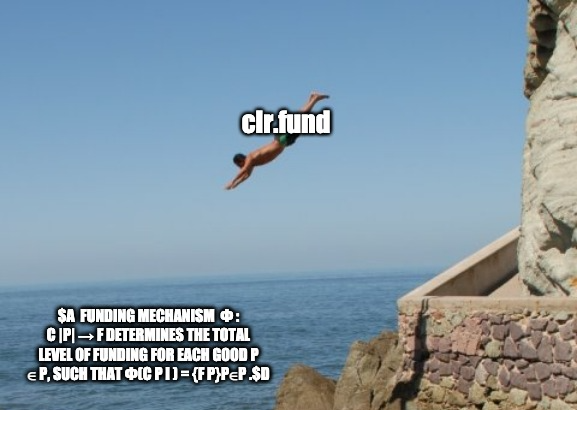Back to Basics: Quadratics + Philanthropy

Quadratic Funding is a niche interest area. You could confidently assume very few people outside of web3 have come across the concept, let alone negotiated this nice little equation for funding mechanisms:
$A funding mechanism Φ : C |P| → F determines the total level of funding for each good p ∈ P, such that Φ(c p i ) = {F p}p∈P .$d
So in this post we're going to break it down. Starting with the basics.
Let's start with Vitalik's paper, which he published back in late 2018, that talked about Liberal Radicalism in the context of Quadratic Funding. He called it Flexible Design For Philanthropic Matching Funds.
What does it mean to be philanthropic? According to the Ancient Greek, it translates to love of humankind, which is a pretty beautiful thing. φιλανθρωπία, philanthrōpía, from phil- "love, fond of" + anthrōpos "humankind, mankind". In contemporary times, the act of philanthropy consists of "private initiatives, for the public good, focusing on quality of life". Public goods can encompass many things and range from anything like source code to music to roads.
Now let's translate that into the context of the web3 space. Based on the premise of philanthropy, what clr.fund and "quadratic funding" is all about is funding good stuff that improves the quality of the Ethereum ecosystem, and people's ability to benefit from this improved ecosystem. It places priority on incentivizing contributions by making them more efficient to keep funding Ethereum’s “most public” digital public goods.

With that cleared up, let's dive into why clr.fund chose to use Quadratic Funding (QF) as the key way to distribute these philanthropic funds. What makes QF so compelling is that its basically a smash-up of grant giving and crowdfunding. Participants are all better off contributing, and receiving, contributions with QF which offers a fantastic efficiency boost. This is through the use of the matching pool. What this matching pool does is give more matched funds to projects that receive more contributions from more people. Basically, the more votes, the more ecosystem confidence. So, a project that gets 500 individual contributions of $1 ends up getting more matched funds than a project that gets 1 contribution for $500.
By its design, quadratic funding incentivizes every member of the community to fund the public goods they want to see in direct proportion to how useful they think it will be to them/ the community. The underlying question is how might we focus less on speculation and more on participation.
The key impact of quadratic funding is that fund allocation is the emergent result of many individuals expressing now much they value projects, rather than a committee arbitrarily deciding who gets what.
It means that as a community, we can focus less on price and the whims of twitter reputations, and more on the money, culture, and community legos that we all want to see in web3. The key here is participation. The real goal is to make sure those that have the most tokens don't always have the loudest voice.